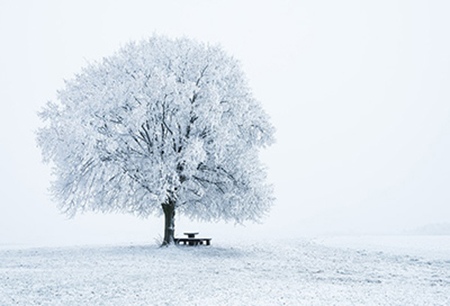Heiko Gerlicher, Capturing the Spirit of the Forest with Photography
When I first saw Heiko Gerlicher’s images of trees near his home in Germany, they immediately reminded me of the fictional Mirkwood in J. R. R. Tolkien’s The Lord of the Rings series of novels. These forest scenes are enchanting and magical, a perfect place for Wood-elves to inhabit in long ages past. Particularly, one image of a tree seems to be walking in giant strides and reminds me of the Ent Treebeard, “the oldest living thing that still walks beneath the Sun upon this Middle-earth.” One has to wonder whether Tolkien himself visited this place years ago giving him inspiration.
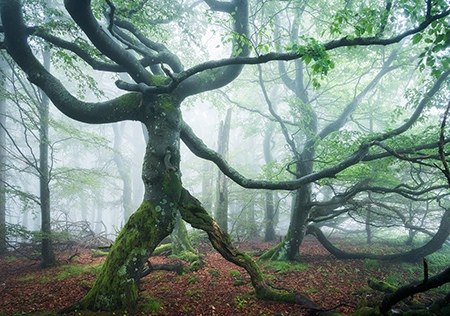
Deep in the woods, light, mist, and foliage are at Heiko’s fingertips. However, these elements often merge and it is hard to take good photos especially when the light is either too bright or dim. But Heiko is a true master of the interplay of sunlight, foliage, and mist and wields his camera as if he is the director of theatrical scenes of nature. When the morning sunlight shines through the forest, it gives volume to the scene and adds dimensionality to the forest. Heiko looks for and takes advantage of these magical moments for his shots. With the forest diffused with mist, he is able to create an ethereal feel and transmit these spiritual atmospheres to his viewers. In particular, his moss scenes add further mystical touches which makes one wonder whether there are still elves living among the trees. Other times, he uses the red glow of sunset reflecting off the trees to build a dramatic, fiery sensation. Even during snowy days, his black-and-white photos reveal the solemn beauty of nature by using the gentle play of soft light illuminated through branches. Heiko’s photos take people back to a cherished, sacred, and spiritual time when the world was new.
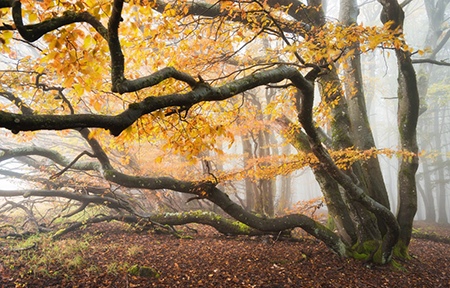
Currently, Heiko is busy shooting the Fall scenery as the foliage changes color. We are lucky to get hold of him for an interview. Enjoy the words and images from this master of natural photography.
Q: Your photos of forests are absolutely astounding. Please share with us your training in photography and why you decided to focus on trees.
A: Thank you very much! Photography has been captivating for me since 2009. This year I got my first digital camera. I learned photography autodidactically, step by step. I have been fascinated by trees since I was a child and nothing has changed until today. So it was obvious for me to capture the beauty of the trees and forests in pictures.
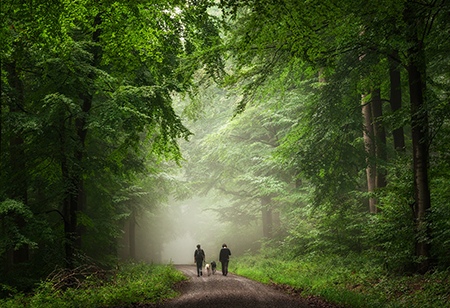
Q: Where is your favorite place to take pictures of trees?
A: I prefer to walk through the forests near my hometown or the neighboring low mountain range on cloudy, rainy, and foggy days. But also the local parks with their old giant trees keep me under their spell.
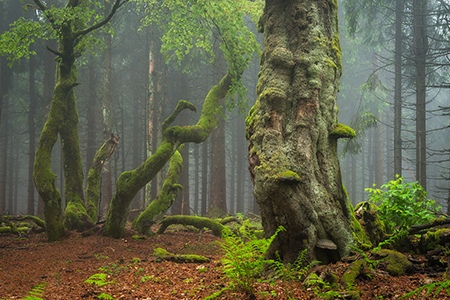
Q: Taking photos of trees in forests could be tricky due to the dim light. At what time do you prefer to shoot those photos and how do you take advantage of sunlight? How long do you usually wait?
A: Yes, it is actually not that easy to find attractive motifs in the forest. The mess of trees and plants is supposed to be a harmonious image composition result. That’s why I’m always looking for an interesting subject – this can be, for example, an old gnarled tree, a weathered rhizome or a moss-covered rock – and then I build the image motif around this anchor point. I avoid sunlight because it creates too strong contrasts in the forest and this makes the picture look very restless and confusing. That’s why I prefer darker and foggy days. The fog clears the trees well and also conjures an exciting and mystical mood. Mostly in the early hours of the morning, I use it for forest photography because fog is most common at this time. Of course, it is also helpful that I have a little previous knowledge of meteorology. So I know for sure when and where I can find the ideal weather conditions. My photography season is therefore autumn and winter.
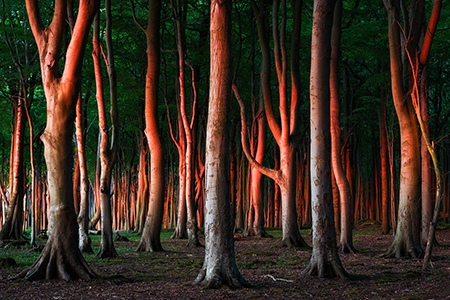
Q: Do you have any preferences as to what species of tree to shoot?
A: I prefer deciduous trees such as beech, oak or birch. Conifers aren’t so exciting in my eyes, as they hardly differ from each other and build monotonous forests. But when a deciduous tree is in such a monoculture got lost, then it will be interesting again.
Q: What kind of camera and equipment do you like to use for taking these photos?
A: I take photos with the full-frame Nikon D800E camera, which delivers at a high ISO setting almost noise-free images. Mostly I use the Zoom lens Nikkor 24-120 mm f / 4, with which I can act quickly and flexibly. In addition, a tripod, a cable remote release, and a polarizing filter are used to avoid reflections on the leaves.
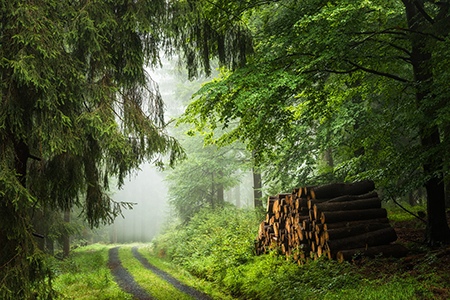
Q: Is there a message you want to communicate to the public with your photographs?
A: I would be delighted if the viewer of my pictures would appreciate the beauty of the wild
forests and almost untouched nature. The forests in particular, from which humans stay out, are important oases for millions of living beings. Unfortunately, the proportion of it on our planet is so small and is getting smaller and smaller.
Q: Do you have any advice for people who are interested in taking photos of trees?
A: If there is sympathy for trees, that is a good prerequisite for tree photography. The best way to learn is by simply trying it out. The basic photographic rules are often helpful in forest photography, but not binding. You should just test new perspectives from time to time.
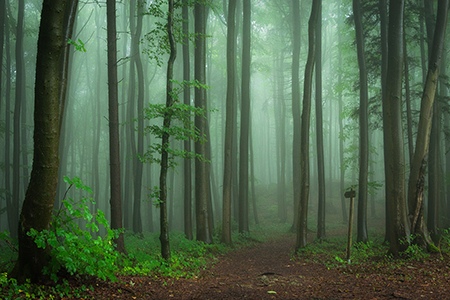
Q: Do you have any future plans that you would like to share with our readers?
A: Not really. I’m more the type of guy who lives from day to day and uses the right moment. There are still so many forests to explore in my immediate vicinity, so that the material for new pictures will not run out for a longer time.
